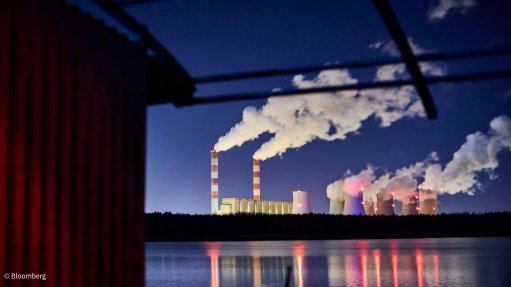Supply chains susceptible to geopolitical risks
A new report by intergovernmental renewable-energy organisation the International Renewable Energy Agency (Irena) warns that although there is no scarcity in reserves of the critical minerals needed for the energy transition, global capabilities for the mining and refinement of these is limited.
Further, in the ‘Geopolitics of the Energy Transition: Critical Materials’ report, Irena states that the energy transition requires a dramatic increase in the supply of critical materials, but that supply chains remain vulnerable to a range of geopolitical risks.
The report warns that these supply disruptions of critical minerals could possibly impact on the speed of the energy transition in the short to medium term.
While the dependency and supply dynamics differ from that of fossil fuels, Irena says the mining and processing of critical materials is geographically concentrated, with a few countries and a few major companies playing a dominant role.
Issues such as external shocks, export restrictions and market manipulation, among others, could also increase the risks posed to supply chains, resulting in supply shortages.
However, the report highlights there is an opportunity to “rewrite the script” for extractive commodities and build momentum for a more inclusive, ethical and sustainable value chain.
On a geographically widespread scale, Irena points out that material reserves open opportunities for the diversification of the mining and processing of critical minerals to, notably, developing countries.
Supporting these policies, Irena notes, will enable developing countries to realise newer business opportunities that could improve resilience while keeping the global decarbonisation agenda on course.
“The energy transition will become a main driver of demand for critical minerals,” states Irena director-general Francesco La Camera.
He explains that the risk of supply chain disruptions is less about energy security per say and more about the potential slowdown of the transition, which must be avoided.
La Camera elaborates that on the road to the twenty-eighth Conference of the Parties to the United Nations Framework Convention on Climate Change at the yearly United Nations Climate Change Conference, his message will be to urgently strengthen collaboration on critical materials resulting in the reduction of the geopolitical risks of concentrated supply chains while accelerating the deployment of renewables to limit global temperatures from rising above a global average of 1.5 °C.
He says the significant increase in critical materials gives the international community an opportunity to diversify supply chains and make them more sustainable, noting that no single country can alone, fulfil its demand for materials. As such, La Camera says collaborative strategies that benefit all involved, need to be developed and implemented.
“Particularly mineral-rich developing countries gain if they can capture a greater share of the critical material value chain.
“By redefining the narrative of extraction, we can promote a more responsible approach to the benefit of people and communities in pursuit of inclusive and resilient economies,” he says.
The mining of critical materials is highly concentrated in specific geographical locations. The dominant players include Australia with lithium, China with graphite and rare earths, Chile with copper and lithium, South Africa with platinum and iridium, the Democratic Republic of Congo with cobalt and Indonesia with nickel.
The processing of critical materials is even more geographically concentrated, with China accounting for more than 50% of the world’s refined supply of natural graphite, dysprosium, cobalt, lithium and manganese.
Further, the mining industry is dominated by a few major companies, leading to frequently oligopolistic markets. As a result, Irena says the industry is highly concentrated, with a significant portion of global production and trade controlled by a few. As a result, the top five mining companies control 61% of lithium output and 56% of cobalt output.
In contrast, Irena notes that critical material reserves are widely distributed, with developing countries currently accounting for most of the global production needed for energy transitions and their share in reserves even greater.
As an example, Bolivia has 21-million tonnes of lithium reserves, but produces less than 1% of the world’s supply.
Irena also reports that an estimated 54% of critical minerals are located on or near indigenous peoples’ land, underscoring the need for community engagement.
If well planned and executed correctly, Irena concludes in the report, a renewables-based energy transition could change the legacy of extractive industries.
As has been the case with extractive industries for centuries, processes and activities carry risks for local communities, such as abuse of labour and human rights, land degradation, water resource depletion and contamination, and air pollution. In this regard, Irena says stronger international cooperation to raise and enforce standards and longer-term corporate views are essential for sustainable development and social licence.
Comments
Press Office
Announcements
What's On
Subscribe to improve your user experience...
Option 1 (equivalent of R125 a month):
Receive a weekly copy of Creamer Media's Engineering News & Mining Weekly magazine
(print copy for those in South Africa and e-magazine for those outside of South Africa)
Receive daily email newsletters
Access to full search results
Access archive of magazine back copies
Access to Projects in Progress
Access to ONE Research Report of your choice in PDF format
Option 2 (equivalent of R375 a month):
All benefits from Option 1
PLUS
Access to Creamer Media's Research Channel Africa for ALL Research Reports, in PDF format, on various industrial and mining sectors
including Electricity; Water; Energy Transition; Hydrogen; Roads, Rail and Ports; Coal; Gold; Platinum; Battery Metals; etc.
Already a subscriber?
Forgotten your password?
Receive weekly copy of Creamer Media's Engineering News & Mining Weekly magazine (print copy for those in South Africa and e-magazine for those outside of South Africa)
➕
Recieve daily email newsletters
➕
Access to full search results
➕
Access archive of magazine back copies
➕
Access to Projects in Progress
➕
Access to ONE Research Report of your choice in PDF format
RESEARCH CHANNEL AFRICA
R4500 (equivalent of R375 a month)
SUBSCRIBEAll benefits from Option 1
➕
Access to Creamer Media's Research Channel Africa for ALL Research Reports on various industrial and mining sectors, in PDF format, including on:
Electricity
➕
Water
➕
Energy Transition
➕
Hydrogen
➕
Roads, Rail and Ports
➕
Coal
➕
Gold
➕
Platinum
➕
Battery Metals
➕
etc.
Receive all benefits from Option 1 or Option 2 delivered to numerous people at your company
➕
Multiple User names and Passwords for simultaneous log-ins
➕
Intranet integration access to all in your organisation

















